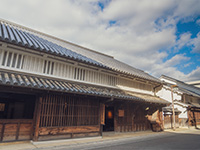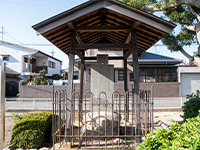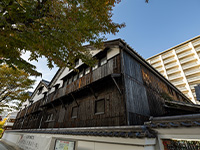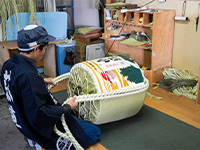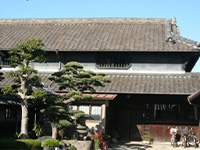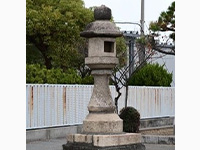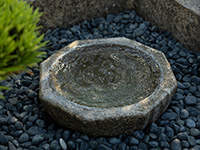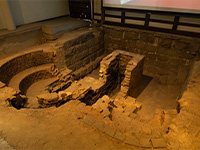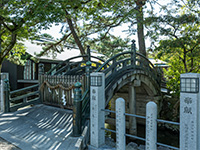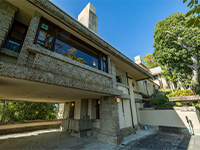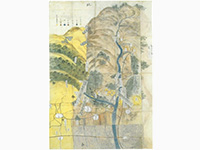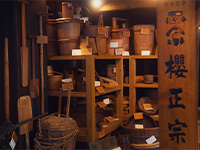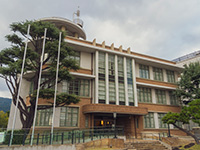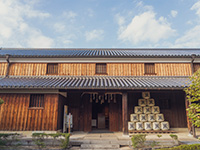Japan Heritage
Japan Heritage
Introducing the stages for the story of Japan Heritage's 'Itami Morohaku' and 'Nada no Ki-ippon' ~Kansai Sakes beloved in Edo~
The Story of ITAMI and NADAGOGO
The Story of ITAMI and NADAGOGO
A wave of refined sake making that burst forth from Settsu Province's Itami (current day Itami City, Hyogo Prefecture). Sake from Itami, or Itami Morohaku, became known as the pinnacle of sake in the consumption capital of Edo where it was brought. The center of production then moved to Nada Gogo, the area from Nishinomiya to Kobe blessed with good water and distribution. The area continues to be known as a place of excellent sake brewing. In 2020, it was recognized as Japan Heritage, making it the first sake-themed Japan Heritage story as 'Itami Morohaku' and 'Nada no Ki-ippon' ~Kansai Sakes beloved in Edo~. Let's take a look at the various locations and the roles they played in Itami and Nada's 400 years of refined sake history.
Five cities involved in the story of Itami and Nada Gogo, which thrived thanks to kudari-zake.
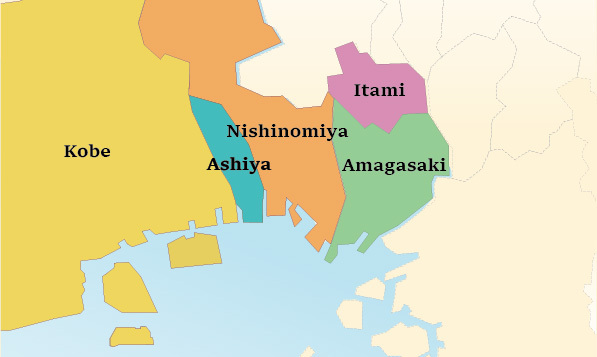
What are now the five cities in southeast Hyogo Prefecture known as (from east to west) Itami, Amagasaki, Nishinomiya, Ashiya, and Kobe play a major role when telling the Japan Heritage recognized story of Itami and Nada Gogo.
Itami
Itami, the origin of refined sake, and the overwhelming popularity of its trailblazing Itami Morohaku
Itami, a city with Mount Rokko to its west, was already a town full of sake breweries by the Edo Period (1603-1868). You can savor the elegance of bygone times even now by traveling to Itami Gocho, still considered an important townscape area. The sake-making Konoike family in north Itami flourished as merchants, and there you can find a monument with the inscription, 'The Konoike family was the first to produce morohaku refined sake and deliver it to Edo.' It is an important monument that corroborates Itami's claim as the place where refined sake first originated. Morohaku means 'both white,' or sake that uses white, not brown rice in both the koji and moromi. Sake that was white and cloudy was generally consumed at the time, and so this Itami sake that was clear and beautiful to see as well as dry and refreshing in the mouth was seen as refined by drinkers, earning it popularity in Edo and the rest of the country.
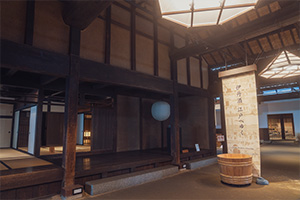
Itami City Museum of Art,
History and Culture
(The former Okada residence /
the former Ishibashi residence)

Itami Oimatsu Brewing
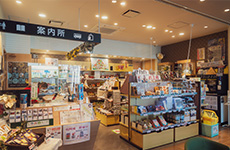
Itami Gallery
Representative Cultural Properties
Amagasaki
The komodaru, developed in order to carefully carry sake to Edo
Amagasaki is a city located to the south of Itami, and it supported the sake of Itami and Nada Gogo from the shadows. In Edo, products coming from the Kansai region were often prized as kudarimono. The sake of Itami and Nada Gogo, known as kudari-zake, was brought to Edo while swaying in transport ships known as taru-kaisen (barrel cargo vessels) dedicated to sake barrels, peaking at a million casks a year. The komodaru was developed in order to keep sake safe while packed into a ship's hold. These began by wrapping straw around a barrel in order to absorb shocks. The brand of sake then came to be written on these, and they continue to be made in workshops found inside the city of Amagasaki.
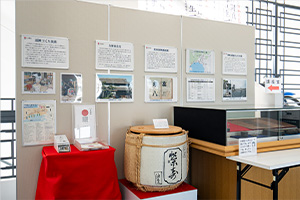
Amagasaki City Museum of History
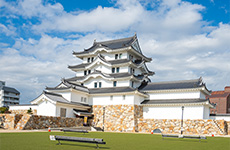
Amagasaki Castle
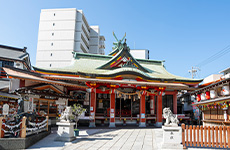
Amagasaki Ebisu Shrine
Representative Cultural Properties
Nishinomiya
Miyamizu, the blessing gushing from Mt. Rokko that creates Nada no Ki-ippon
The region known as Nada Gogo, located along the coast of Nishinomiya and eastern Kobe, began developing in the mid-Edo Period. The sake brewing techniques of Itami Morohaku were brought in, and it also enjoyed a convenient location for shipping goods to Edo, quickly making it a major production area for kudari-zake. It continues to be Japan's largest region for refined sake brewing, boasting a share of a quarter of all sake brewed in Japan. Its sake brewing areas of Imazu-go and Nishonomiya-go enjoy Nishinomiya City's asset that is miyamizu, its groundwater. Complex intersections of subterranean water make for water suited for sake brewing, creating the refreshing flavor that Nada sake known as Nada no Ki-ippon is famed for. Miyamizu continues to come from the wells in Nishinomiya-go, and it is still used to brew sake.
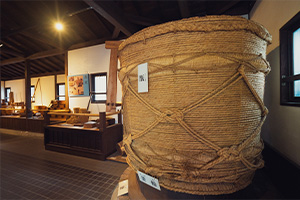
Hakutakarokusuien
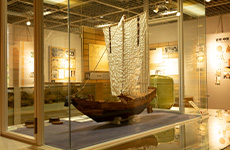
Nishinomiya City Folk Museum
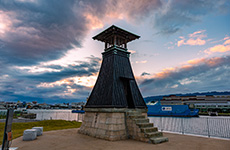
Imazu Lighthouse
Representative Cultural Properties
Ashiya
Water wheels on the Ashiya River and other Mt. Rokko rapids are what supported the massive production of kudari-zake
The stable production quality and volume was one of the reasons that the sake of Itami and Nada Gogo rose to fame around Japan by way of Edo. Various methods were used to make mass production possible, such as brewing during the coldest part of the winter, the establishment of brewing methods that create a smooth and refreshing taste, and the improvement of tools. Water wheels built on the Ashiya River and other Mt. Rokko rapids also allowed for a dramatic increase in sake rice milling efficiency. Materials from the time depict a grouping of about twenty water wheel locations along the Ashiya River alone. The wealth that came to Itami and Nada thanks to these many favorable conditions as well as business acumen was used by sake brewers to develop the region and support the arts and culture. The Yodoko Guest House (the former Yamamura residence) that stands near the Ashiya River is a representative work of modern architecture that displays the spirit of these times. The enterprising spirit held by eighth-generation head of Sakura-Masamune Tazaemon Yamamura has allowed this world-famous architect's work to stand to this day.
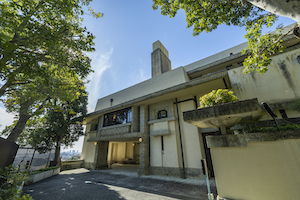
Yodoko Guest House
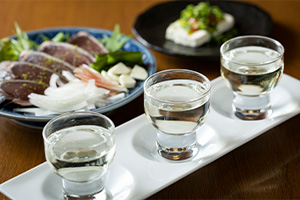
Yuzu Syouten
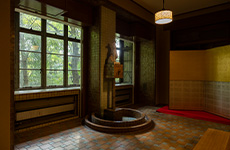
Tekisui Museum of Art
Representative Cultural Properties
Kobe
The 'Rokko-oroshi' winter wind and the sake brewing techniques supported by the Tanba toji
The sake breweries of Nada Gogo are built to be long from east to west so as to better catch the winter's cold northern wind known as the 'Rokko-oroshi.' Doing this allows them to maintain low temperatures appropriate for brewing sake inside and also increased the efficiency of production by allowing for the quicker cooling of steamed rice and more. Additionally, the techniques of the Tanba toji (brewing craftsmen) who came from the northern side of Mt. Rokko during the farming off-season made possible the steady supply of refined sake known for its good taste. Through repeated improvements in technology and tools, such as brewing during the coldest time of the winter and the three step shikomi that promotes fermentation, they established sake brewing standards that have carried on to present-day sake. Of Nada Gogo's five go, the three of Uozaki-go, Mikage-go, and Nishi-go sit in Kobe City's Nada Ward and Higashinada Ward. With its many nationally famous sake brewing companies, the area can truly be said to still lead the sake brewing industry.
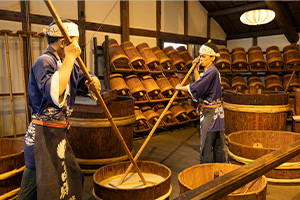
Hakutsuru Sake Brewery Museum
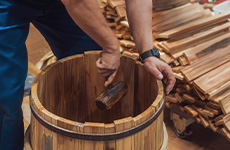
Kiku-Masamune Taru Sake Meister Factory

Nadagogo Sakedokoro

